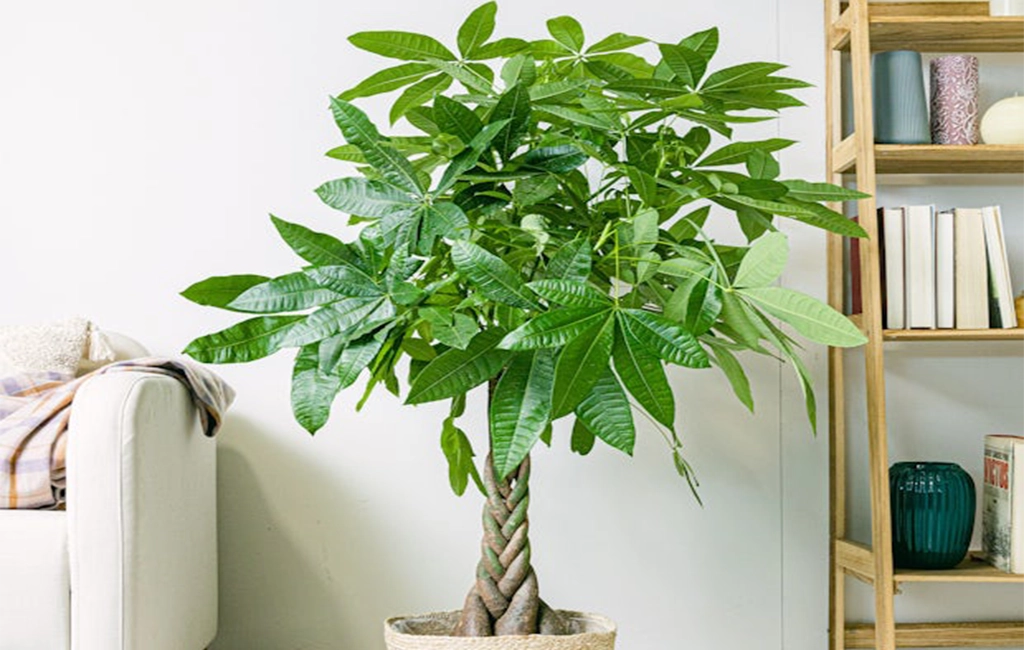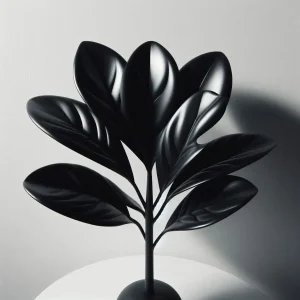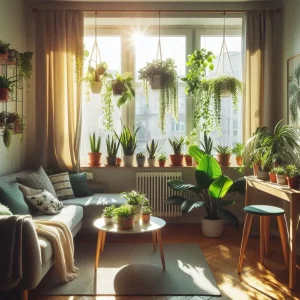The Pachira aquatic plant, also known as the Money Tree, is considered a beautiful and captivating indoor plant. This plant is easy to care for, has a long lifespan, and adds a luxurious touch to its surroundings. Especially if you have an interest in using plants in the interior decoration of your living room or hallway, this plant, with its unique charm, can serve as a prominent decorative element. To some extent, the placement of the Money Tree is recognized in Feng Shui, and it is utilized for this purpose. In this article, we will become acquainted with various names for the Pachira, how to care for it, and interesting information about this money tree.
Proper Care for Pachira:
Page Contents
ToggleCultivating and caring for Pachira is straightforward and does not involve much complexity. To care for the Money Tree, factors such as temperature, climate, light, humidity, soil, and more should be considered. Below, we’ll take a brief look at each of these aspects:
| Care for Pachira | Details |
| 1. Suitable Soil | Use well-draining soil with a mix of sand, perlite, clay, and gravel. A recommended ratio is 60% prepared potting soil and 40% perlite. |
| 2. Proper Watering | Avoid over-saturating the soil. Pachira needs more moisture compared to other houseplants. Excessive watering may lead to root rot. |
| 3. Appropriate Humidity | Pachira thrives in a humid environment. Maintain the necessary humidity level for optimal growth. |
| 4. Light Requirements | Pachira requires ample light but can tolerate bright indirect light. Avoid intense midday sunlight in the summer. Feng Shui suggests placing it in the south or east part of the home for positive effects. |
| 5. Temperature Range | Keep Pachira in a temperature range of 15 to 25 degrees Celsius. Extremes in temperature may lead to issues with the plant’s leaves. |
| 6. Fertilization Needs | Fertilize the soil twice a month during the growing seasons (April to September). |
| 7. Repotting | Repot when the current pot becomes too small and cannot support the plant’s weight. No need for early repotting unless necessary. |
Suitable Soil for Pachira:
For Pachira care, well-draining and enriched soil is suitable. A mix of sand, perlite, clay, and gravel is excellent for Pachira potting soil, ensuring optimal growth for the plant. It is recommended to use a mix of 60% prepared potting soil and 40% perlite.
Pachira is a hidden source of wealth, not only in your account but also in hearts and energies.
Proper Watering for Pachira:
How should Pachira be watered? While you should never over-saturate the soil, Pachira requires more moisture compared to other houseplants. If the soil of the plant becomes excessively wet, its roots may rot, endangering the overall health of the plant.
Appropriate Humidity for the Money Tree:
Creating a humid environment for the plant allows it to experience optimal growth conditions. Pachira is friendly to humidity and is unable to thrive in excessively dry conditions. Therefore, maintaining the necessary humidity level is crucial for the well-being of your Pachira at home.
Light for Pachira:
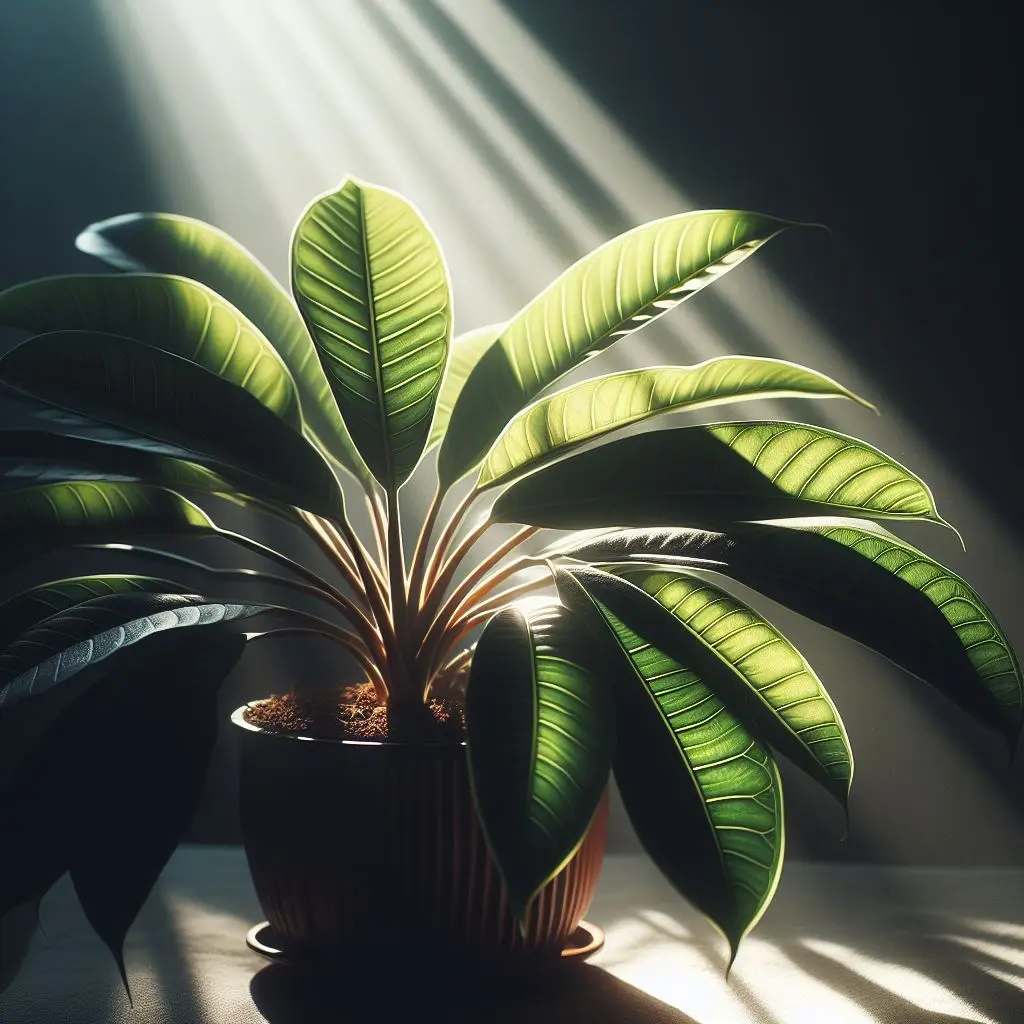
Pachira requires ample light, but the good news is that it can tolerate bright indirect light as well, and it won’t pose a problem for the plant’s growth process. Although Pachira is adaptable to bright light, intense midday sunlight in the summer is not suitable for its growth conditions.
Placing the Pachira plant in the south or east part of your home, according to Feng Shui, has positive effects and, based on Chinese beliefs, contributes to the absorption of wealth, blessings, and prosperity.
Temperature for Pachira:
A temperature range of 15 to 25 degrees Celsius is ideal for maintaining the Pachira plant. This plant does not tolerate higher or lower temperatures well, and issues may arise in the conditions of its leaves if exposed to extremes.
Fertilization Needs for Pachira:
It is recommended to fertilize the soil of the Pachira plant twice a month during its growing seasons. The growth seasons for this plant begin in April and continue until September. It is necessary to add fertilizer to the soil during this period.
Repotting Pachira:
When the plant has grown to a size where its current pot has become too small and cannot support the weight of the plant, it’s time to repot. Otherwise, there will be no need for early repotting for the Money Tree.
read more: Child-Friendly Indoor Plants: A Guide to Safe and Enchanting Greenery
Mysterious Features of Pachira:
Air Purification:
Pachira is distinguished by its exceptional air-purifying capabilities, functioning much like an air purifier. The Money Tree can act as an air filter, aiding in the reduction of air pollution in the environment. Placing a large Pachira plant can be an excellent option for those seeking clean and fresh air at home without the need for an air purifier.
Air-purifying plants, with their unique characteristics, can enhance modern living conditions.
Symbolic Cultural Significance:
Pachira holds symbolic importance, especially in Eastern cultures, as a representation of wealth. While there is a mythical story associated with someone becoming rich by cultivating and selling the plant in a specific way, this narrative cannot overshadow the significance of Feng Shui.
Precision in Shape Formation, Similar to Bonsai:
Pachira possesses the ability to be artistically shaped due to its high flexibility. While this feature is typically observed in the bonsai-making process, it is precisely this characteristic that sets Pachira apart as a distinctive plant.
Edible Seeds:
The Pachira plant produces edible seeds known as Pachira nuts. These nuts are consumed as a snack and are recognized as “Ajil Pachira.” They can be used either boiled or roasted, offering a taste reminiscent of chestnuts. It is advisable to consult with a traditional medicine practitioner before consuming them.
The Reason Behind Naming Pachira as the Money Tree or Wealth Tree:
You might wonder, what does the Pachira plant symbolize? Pachira, or the Money Tree, is a symbol of wealth. The reason behind naming this plant as the Money Tree or Wealth Tree is quite interesting and noteworthy. In China, there was once a poor man living on a farm, struggling to make ends meet. The very tree now known as the Pachira was present on this farm. The elderly man, finding all paths to income closed off, started caring for the Pachira tree and cultivated a considerable number of them on his farm.
Propagation of Pachira:
Pachira can be propagated through two methods:
Propagation through Cuttings:
– Cut a healthy stem or branch from the Pachira plant.
– Ensure the cutting has a few leaves and nodes.
– Plant the cutting in well-draining soil and keep it consistently moist until roots develop.
Propagation through Seeds:
– Collect mature seeds from the Pachira plant.
– Plant the seeds in a suitable potting mix and keep the soil consistently moist.
– Germination should occur within a few weeks.
This is what the ambius site says about Pachira plant
The Pachira aquatica or the money tree is a tropical tree that is native to Central and South America, where it naturally grows in swamps. The name “money tree” is rumored to have originated from when a poor man prayed for money and he found the Pachira aquatica, took it home and began to make money by selling the seeds of the plant. So, unfortunately, you won’t strike gold by adding this attractive indoor plant species to your desk.
Pests and Diseases of Pachira:
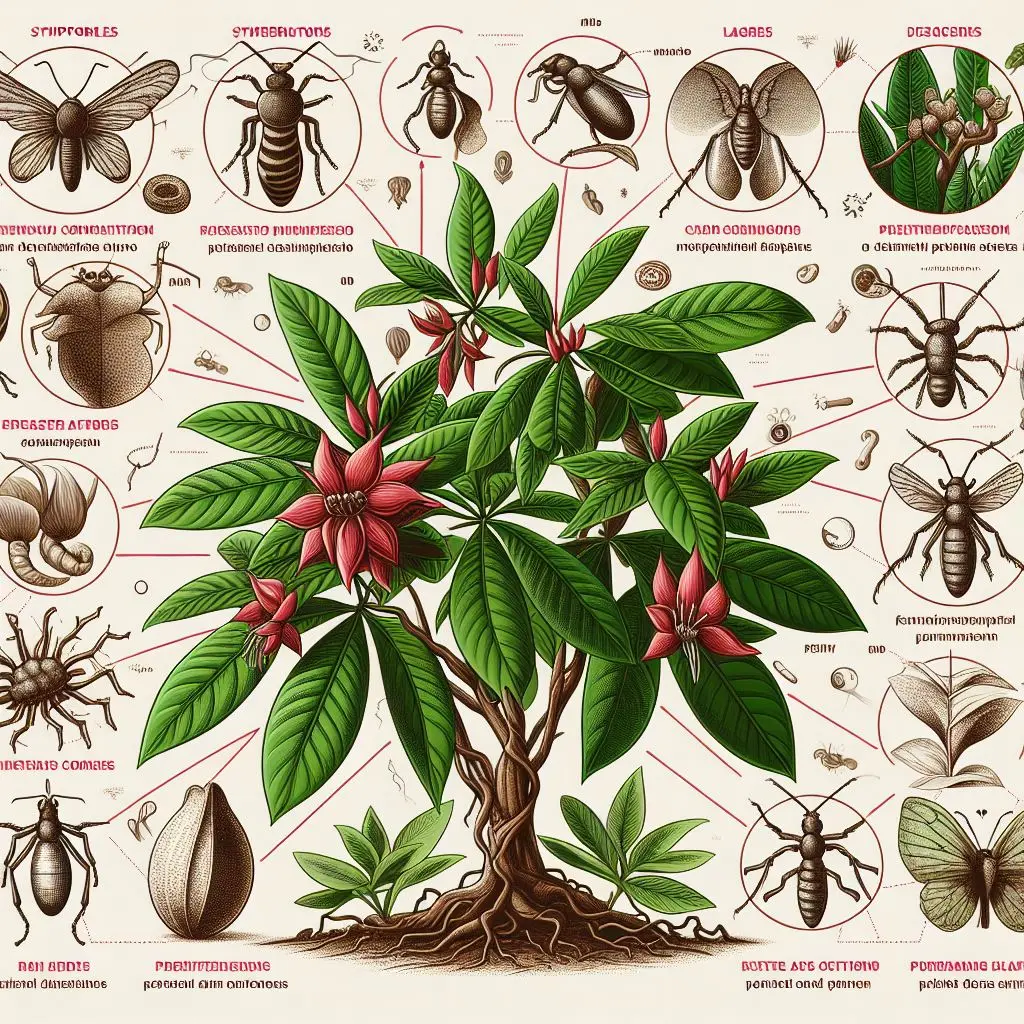
After acquiring a Pachira plant, various factors can lead to different diseases and negatively impact its growth conditions. Some common problems and diseases associated with Pachira include:
Leaf Rot:
– Excessive watering can lead to root and leaf rot. Proper soil drainage is essential to prevent this issue.
Yellowing of Pachira Leaves:
– Insufficient moisture can cause the leaves of the plant to turn yellow. Incorrect fertilization can also contribute to this problem.
These issues can be mitigated by maintaining proper watering practices, ensuring good soil drainage, and providing the plant with the appropriate levels of moisture and nutrients.
Faded Color of Money Tree Leaves:
– The lack of essential nutrients in the soil can lead to the fading of color or the development of small spots on the leaves of the Money Tree. To address this issue, promptly add the necessary nutrients to the soil.
FAQ
Feng Shui Placement of Money Tree:(What effect does feng shui have on the money tree?)
According to Feng Shui principles, it is recommended to place the Money Tree near your money box or the area where you keep your valuables and jewelry. This placement is believed to attract positive energy and enhance financial well-being.
Can the Presence of Money Tree Truly Bring Wealth?
It’s better to view this as more of a myth; however, in general, having plants, including the Money Tree, in your home contributes to an increase in positive energy. While the Money Tree itself may not directly bring wealth, its presence can create a harmonious atmosphere.
Reasons for Curved Leaves on Money Tree:(What are the reasons for the curved leaves in the money tree?)
The curved leaves on the Money Tree are usually a result of its natural inclination towards light. To address this, it’s recommended to rotate the plant daily so that the leaves don’t consistently lean in one direction, promoting more balanced growth.
How to Maintain Money Tree in Water?
To keep the Money Tree in water, place the plant’s roots in water and periodically add nutrients to the water. This method involves maintaining the roots submerged in water rather than planting the Money Tree in soil. Regularly changing the water ensures a clean and healthy environment for the plant.
Why Do Pachira Leaves Turn Yellow?
One of the primary reasons for Pachira leaves turning yellow is excessive exposure to light. Too much light can lead to leaf burn and, consequently, yellowing of the leaves. Additionally, significant temperature differences between day and night can harm the plant. To prevent yellowing, it’s advisable to keep the plant away from direct sunlight and in an environment with minimal temperature fluctuations. Avoid placing the plant near heating appliances or windows.
Why Do Pachira Leaves Turn Brown?
If the plant receives excessive water, the roots and leaves may become swollen and saturated, leading to browning of the leaves. Regular watering and a well-functioning drainage system can easily prevent this occurrence and save Pachira from leaf browning and root rot.
Why Is Pachira Sparse?
To have a lush and dense plant, proper pruning is essential. Always trim the branch in front of a node or leaf with pruning shears, not behind it. Never prune more than one-third of the stem, and angle the cut at 45 degrees to encourage new growth. Trim dead stems and leaves to redirect the plant’s energy towards healthy branches and leaves. Adequate light is also crucial for Pachira’s fullness. A plant deprived of sufficient light cannot generate the necessary energy for the growth and maintenance of new branches and leaves.
Does Pachira Produce Oxygen During the Night?
Pachira is an excellent air-purifying plant and the ideal choice for the bedroom. Unlike most other plants, Pachira produces oxygen during the night, enhancing the room’s oxygen levels and ensuring a healthier atmosphere during sleep.

